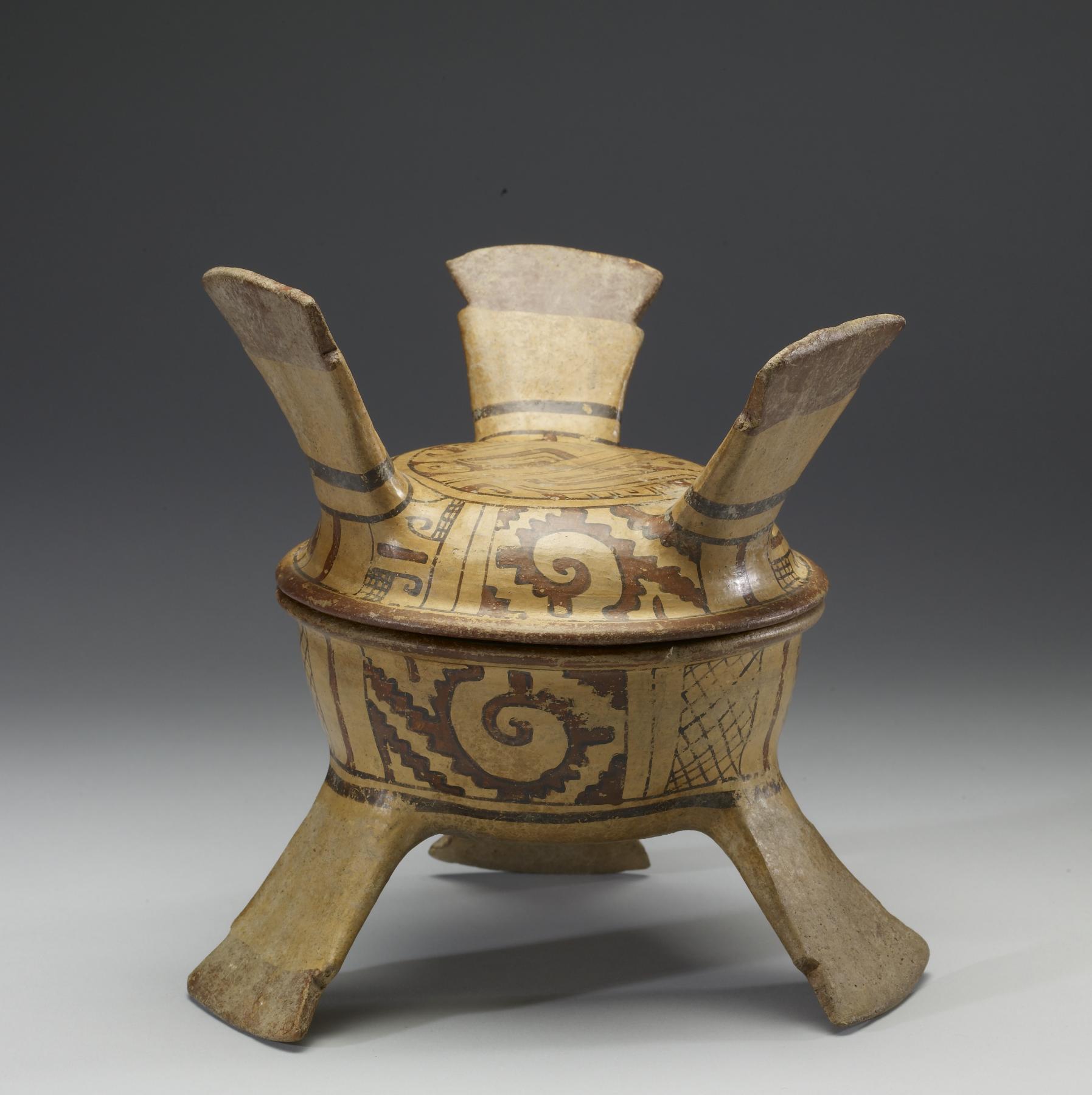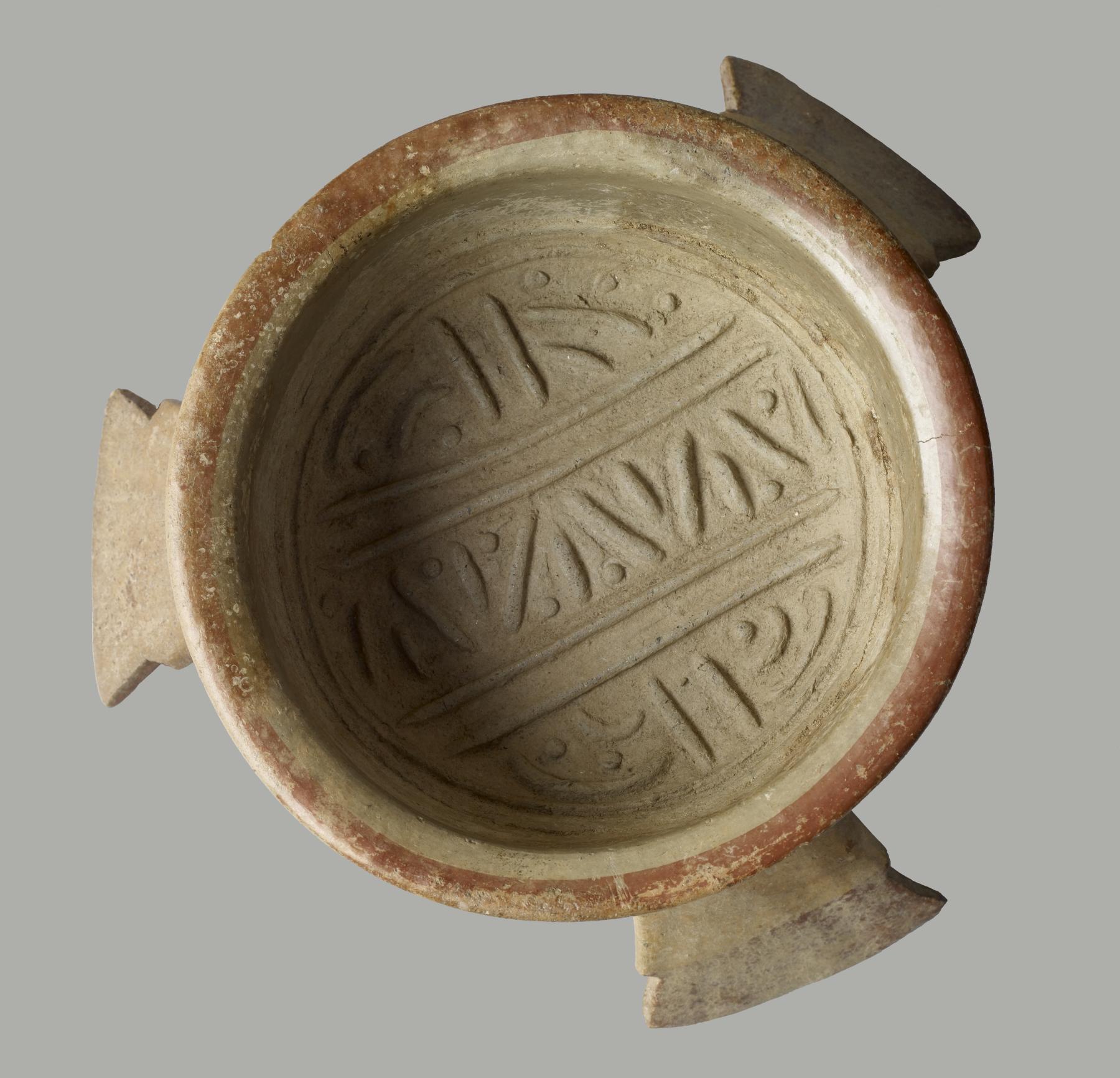Two Tripod Dishes
(Ancient Americas )
The misnamed "lacquerware" is an artistic accomplishment of the Postclassic Period, having been developed in the Mixteca- Puebla region east and south of the Valley of Mexico. Aztec nobility preferred this hard and shiny-surfaced, slip-painted earthenware for their food-service vessels, importing large quantities from Cholula and other cities in the region. Mixteca-Puebla pottery is renowned for its well-controlled polychromy and lively decorative programs that depict symbolic elements or entire scenes from religious myths. This pair of tripod dishes combines the polychrome painting of the Mixteca-Puebla tradition with the controlled decorative approach that typifies Postclassic pottery from central Mexico. The painter blended the all-important Mesoamerican stepped fret motif as the primary decorative element with more simplified rectangles of crosshatched design. The exterior bottom of each vessel displays a binary image of a feathered saurian head, perhaps an allusion to the culture hero and deity Quetzalcóatl. The tall, step-form tripods recall the cut-out tripod supports typical of fifth-century Teotihuacan pottery. It is likely that the Mixteca-Puebla and Aztec pottery artists adopted this time- honored form to associate their specialized ritual wares with the ancient majesty of Teotihuacan, the "City of the Gods." The interior bottom of each dish contains three bands of raised geometric elements. It is unknown whether these vessels were used to grind or abrade a foodstuff or other organic substance or whether they served a solely ritual, service function.
Provenance
Provenance (from the French provenir, 'to come from/forth') is the chronology of the ownership, custody, or location of a historical object. Learn more about provenance at the Walters.
Private collection, New York; Ron Messick Fine Arts, Santa Fe, New Mexico [date and mode of acquisition unknown]; John G. Bourne, June 8, 1998, by purchase; by bequest to Walters Art Museum, 2017.
Exhibitions
| 2012-2013 | Exploring Art of the Ancient Americas: The John Bourne Collection Gift. The Walters Art Museum, Baltimore; Frist Center for the Visual Arts, Nashville. |
Geographies
Mexico (Place of Origin)
Measurements
Overall H: 8 1/16 x W: 7 5/16 x D: 8 3/16 in. (20.5 x 18.6 x 20.8 cm); Base H: 4 7/16 x W: 7 5/16 x D: 8 3/16 in. (11.2 x 18.6 x 20.8 cm); Lid H: 3 11/16 x W: 6 11/16 x D: 7 9/16 in. (9.3 x 17 x 19.2 cm)
Credit Line
Bequest of John G. Bourne, 2017
Location in Museum
Not on view
Accession Number
In libraries, galleries, museums, and archives, an accession number is a unique identifier assigned to each object in the collection.
In libraries, galleries, museums, and archives, an accession number is a unique identifier assigned to each object in the collection.
2009.20.239






